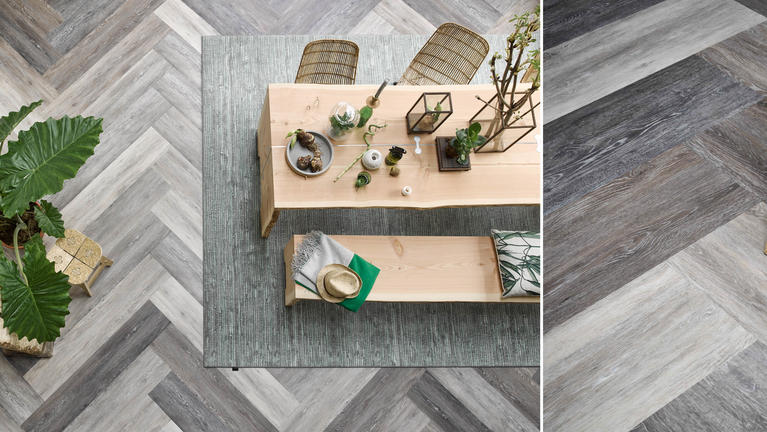
Mixing Wood Tones in your Home Decor
Is it ok to mix wood tones in your home decor?
Yes, it’s ok to mix wood tones in your home decor. In fact, it’s encouraged! Wood tones fall into the neutral category and therefore it’s relatively easy to mix them. And when done properly, mixing wood tones can create beautiful, harmonious and inviting spaces. Whether you’re using different types of wood floors throughout your home, or mixing various pieces of wood furniture in a room, we have compiled a few tips to help guide you.
A few tips to consider when using different woods throughout your home
1. Select common undertones
The undertone, or the underlying hue of the wood, can be warm, cool or neutral. Wood is considered to have a warm undertone if it incorporates warmer colours such as red, orange or yellow as its base, and a cool undertone if it incorporates cooler colours such as blue or grey as its base. If the wood finish looks beige, it is considered to have a neutral undertone.
The best way to determine the undertone of wood is to compare your selected colour to other shades of the same colour. Brown is inherently a warm colour because its base is yellow/orange. However, if you place your shade of brown next to a grey or blue sample and the undertones seem to match, then it is likely to be a cool version of brown.
Once you determine the undertone you will be in a better position to mix and match wood flooring in different rooms of your home and with different pieces of wooden furniture and items such as frames and ornaments.
2. Think about wood grain pattern and sizes
If your wood tones are not similar, you can create continuity with similar wood grain patterns and sizes. The grain pattern refers to the stripes, swirls or flame-like shapes you see in the wood. The grain pattern size is the scale of those elements.
The pattern and size of wood grain will impact the final look of your room as much as colour. Large wood grains create a more casual, rustic look, while fine wood grains are more formal.
3. Embrace a mix of new and old
If the furniture in your home has been collected over time, then the woods will almost definitely not match. This is not a bad thing, and in many cases it provides scope to mix and match a variety of finishes to create interesting contrasts and looks.
Rugs, wall hangings and other textiles are great ways to break up a visual plane and make the difference in wood tones less jarring.
Depending on your pieces and how you style them, the result can be modern, rustic, or a balanced combination of the two.
4. Incorporate textiles
If you find the contrast of your wood tones too stark, for example, you have a light wooden table on top of dark wooden floors, a rug can serve as a buffer and create a more natural transition between the two.
Rugs, wall hangings and other textiles are great ways to break up a visual plane and make the difference in wood tones less jarring.
